The Determination of the Distance to the Sun
by using a Transit of Venus
Basic Idea for the Evaluation of twice exposed Photos
For two observers at different sites on Earth a transit lookes slightly
different: Venus enters the Sun's disc at different times and doesn't leave it
simultaneously. And, taken at the same moment, Venus' position in front of the
Sun is not quite the same. This parallactic effect can be observed
- if the duration of the transits as measured from different sites are
compared,
- if the exact moments of ingress or of egress are compared or
- if two simultaneously taken photos are scaled to the same size and
merged with exactly the same orientation.
This document shortly explanes the basic idea of the last method. The details
are described in an additional paper.
- Determination of the distance to the Sun by measuring the
parallactic displacement of Venus due to two sites on Earth
- The solar parallax πS is the angle by which the Earth's
radius appears when observed from the Sun.

Obviously, the following equation holds: sinπS =
RE/dS or πS =
RE/dS because πS is very small.
Therefore, if the solar parallax is known the distance to the Sun dS
can be calculated by means of the following equation:

Precondition: The Earth's radius RE is known.
- The solar parallax can not be measured directly because nobody can
observe the Sun from the Earth's centre. Instead, the Sun's position is
measured with respect to the stars from two sites on Earth which are seperated
as far as possible. The difference between both positions is the
Sun's actual angle of parallax βS. That is the angle by which
the distance between both sites appears from the Sun.

From the parallactic angle, the solar parallax πS can be
derived.
Precondition: The linear distance Δ between the two sites is
known.
- The Sun is very far away, its parallax, therefore, very small. For
this reason, it is easier to measure the parallactic angle β of a nearer
object. When passing the Sun's disc, Venus is much closer to the Earth than
the Sun. Additionally, its position can easily be determined.

The parallactic angle of the Sun can be derived from the actual parallax
βV of Venus.
Precondition: The ratio between the distances to Venus and to the Sun is
known.
- In general, the line connecting both sites will not be perpendicular to the
direction to the Sun.

In that case, not the distance between the sites itself but its projection
parallel to the direction to the Sun is of interest. The length of this
projection can be calculated.
Precondition: The angle of projection is known.
- Measurement of Venus' actual parallax by means of twice exposed
photos
The parallactic angle is to be measured by comparison of two photos which have
been taken simultaneously at different sites on Earth. In order to do that the
photos must be adjusted and compared:
- In general, the photos will have different scales and different orientations,
as well.
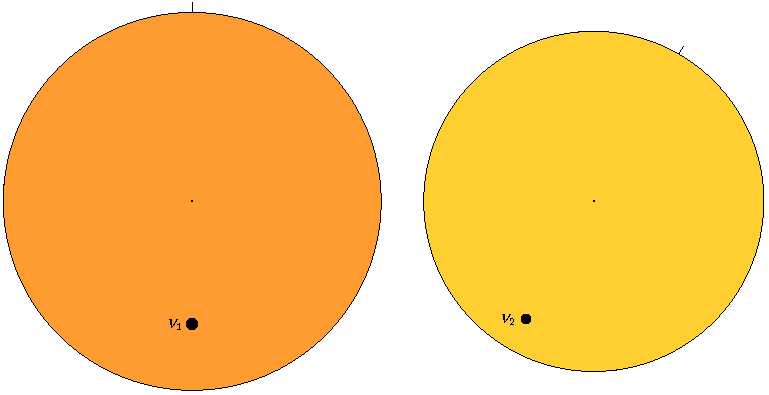
- After having determined the Sun's radii on both pictures, it is possible to
magnify (with a computer) one of the pictures so that the scales are the same:
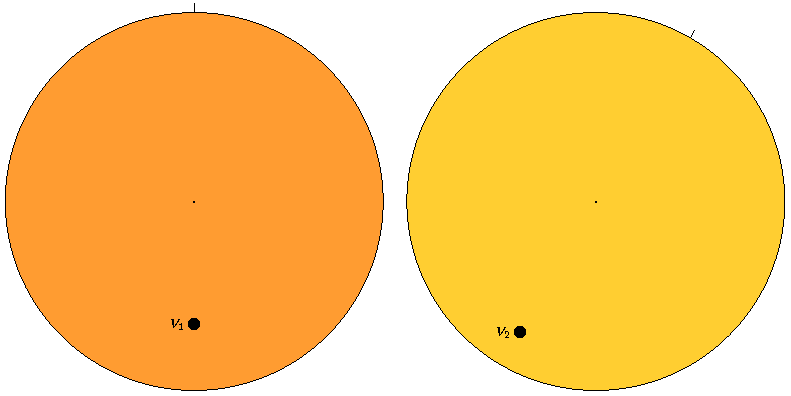
- If then one of the pictures is rotated so that both have the same orientation
(e.g. north above),
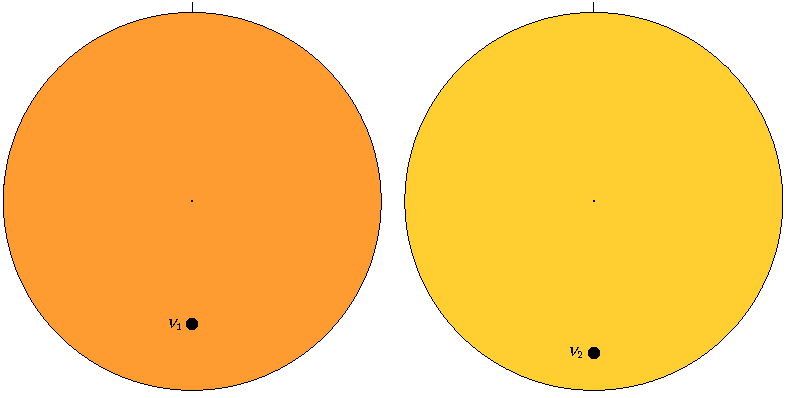 then it will be possible
then it will be possible
- to superpose the pictures so that the parallax of Venus becomes
observable and measurable.
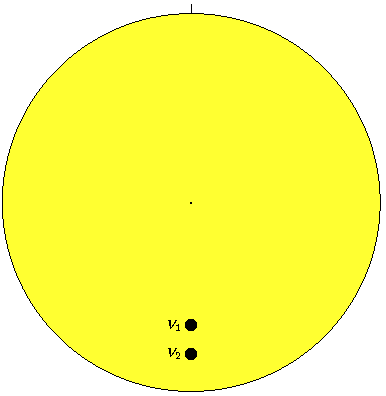
However, it is difficult to determine the orientation of those
pictures with sufficient accuracy!
- Exposing pictures twice with fixed camera is one possibility
of solving that problem: If you expose the same negativ (or two digital
pictures) twice within an interval of about two minutes the superposition will
show two solar discs with nearly no intersection. This fact is due to the
daily rotation of the Earth which causes the Sun apparently to move over the
sky - exactly from east to west, parallel to the celestial
equator!
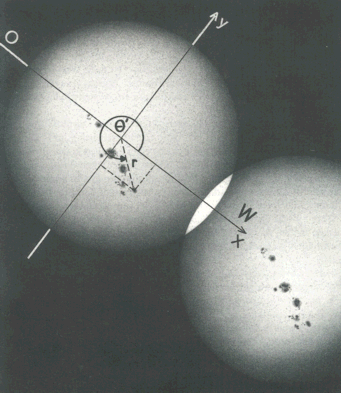
Therefore, the direction of the solar displacement shows us the exact
direction from east to west!
Proposals for multiple exposures of photos are made in another place.


 Udo Backhaus
Udo Backhaus
last modification: March 28th, 2008
|
|



 Udo Backhaus
Udo Backhaus









